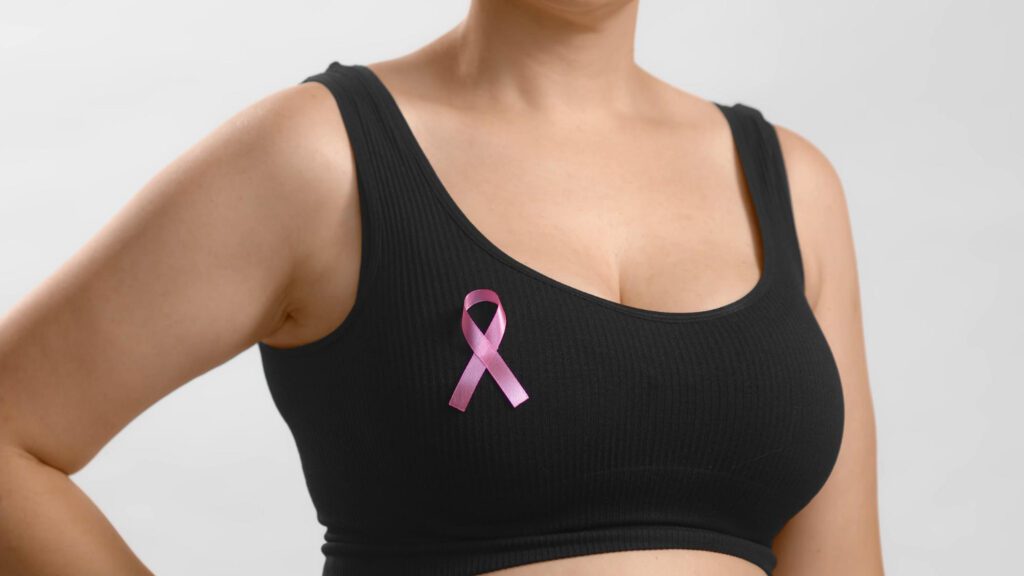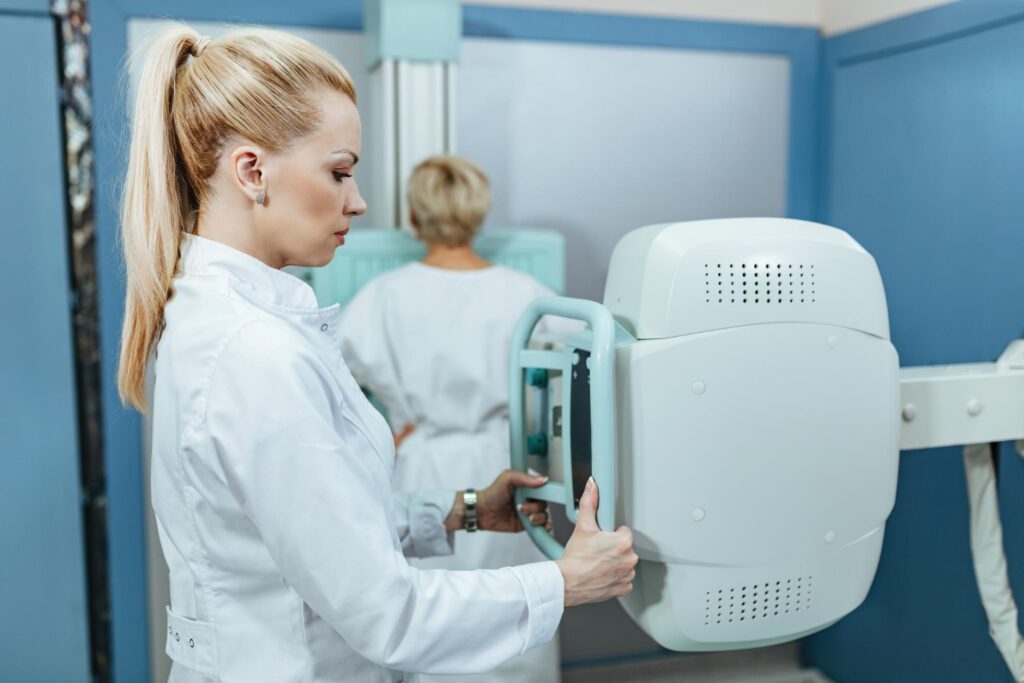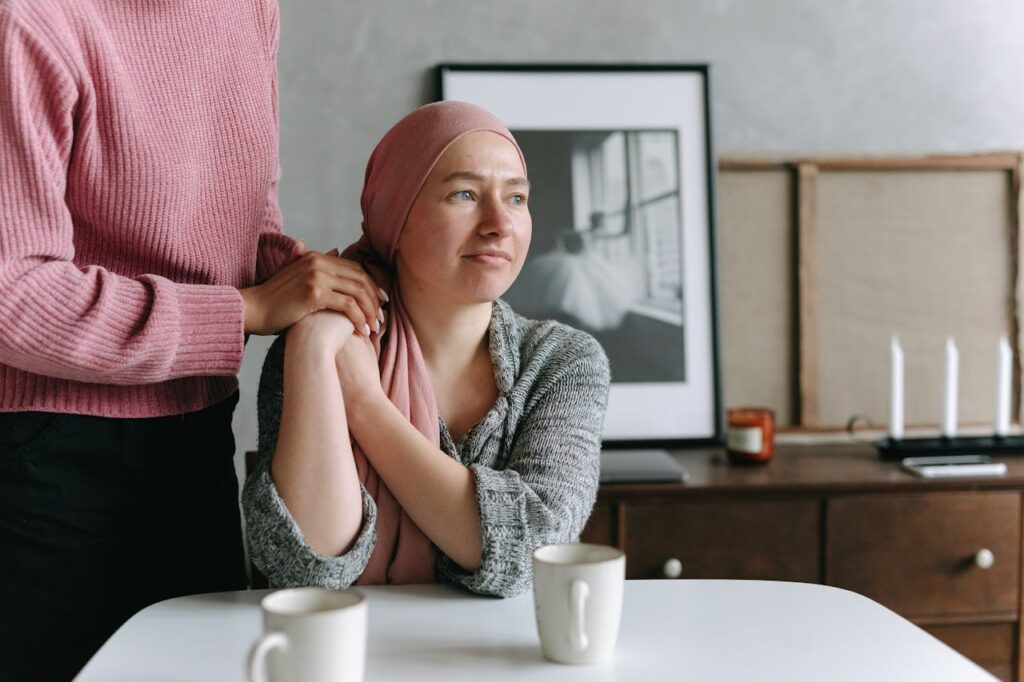Breast cancer is one of the most common cancers affecting women worldwide, though men can also be diagnosed with the disease. There are several types of breast cancer, each with unique features affecting how it develops, spreads, and responds to treatment. Understanding these types, from ductal carcinoma to invasive lobular carcinoma, is crucial for proper diagnosis and care. Early detection and identifying the specific type of breast cancer can greatly enhance the chances of successful treatment and recovery. Book a free appointment with a cancer care specialist to discuss your breast health and any concerns you may have.
Key Takeaways:
- Breast cancer is a complex disease with multiple types, each with unique characteristics and treatment options.
- Early detection and understanding the specific type of breast cancer can greatly enhance treatment outcomes.
- Staying informed and proactive can significantly influence health outcomes and improve chances of successful recovery.
Ductal Carcinoma In Situ (DCIS)
Ductal Carcinoma In Situ is a non-invasive type of breast cancer where abnormal cells are found in the lining of the breast milk duct but have not spread outside the duct. Often detected through mammography, DCIS is considered the earliest form of breast cancer and is highly treatable.
Symptoms:
- Often asymptomatic
- Sometimes detected by a lump or unusual discharge
Treatment:
- Surgery (lumpectomy or mastectomy)
- Radiation therapy
- Hormone therapy (in some cases)
Prognosis:
- Excellent with early detection
- High survival rate when treated promptly
Invasive Ductal Carcinoma (IDC)
Invasive Ductal Carcinoma is the most common type of breast cancer, accounting for about 80% of all cases. IDC starts in the breast ducts and invades the surrounding tissue, potentially spreading to other parts of the body.
Symptoms:
- Lump in the breast or underarm
- Change in breast shape or size
- Skin dimpling or irritation
- Nipple discharge
Treatment:
- Surgery (lumpectomy or mastectomy)
- Chemotherapy
- Radiation therapy
- Hormone therapy
- Targeted therapy
Prognosis:
- Varies depending on stage at diagnosis
- Generally good if detected early
Invasive Lobular Carcinoma (ILC)
Invasive Lobular Carcinoma begins in the milk-producing lobules and invades surrounding tissues. It is the second most common type of invasive breast cancer.
Symptoms:
- Thickening or hardening in the breast
- Changes in breast texture
- Unusual fullness or swelling
Treatment:
- Surgery (lumpectomy or mastectomy)
- Chemotherapy
- Radiation therapy
- Hormone therapy
Prognosis:
- Good with early detection
- Response to treatment varies
Triple-Negative Breast Cancer (TNBC)
Triple-Negative Breast Cancer is a subtype of breast cancer that does not express estrogen receptors, progesterone receptors, or HER2. TNBC tends to be more aggressive and less responsive to standard hormone therapy and HER2-targeted treatments.
Symptoms:
- Lump or mass in the breast
- Breast pain or tenderness
- Nipple changes or discharge
Treatment:
- Surgery (lumpectomy or mastectomy)
- Chemotherapy
- Radiation therapy
- Clinical trials for new treatments
Prognosis:
- More challenging to treat
- Generally lower survival rate compared to other types
HER2-Positive Breast Cancer
HER2-Positive Breast Cancer is characterized by overexpression of the HER2 protein, which promotes the growth of cancer cells. This type of breast cancer tends to be more aggressive but can respond well to targeted therapies.
Symptoms:
- Lump in the breast
- Changes in breast or nipple appearance
- Unusual breast pain
Treatment:
- Surgery (lumpectomy or mastectomy)
- HER2-targeted therapies (e.g., trastuzumab)
- Chemotherapy
- Radiation therapy
Prognosis:
- Improved with targeted treatments
- Varies depending on the stage at diagnosis
Inflammatory Breast Cancer (IBC)
Inflammatory Breast Cancer is a rare and aggressive form of breast cancer that blocks lymph vessels in the skin of the breast, causing inflammation and redness. It is often mistaken for an infection.


Symptoms:
- Red, swollen breast
- Warmth and tenderness
- Skin changes resembling orange peel
Treatment:
- Chemotherapy
- Surgery (mastectomy)
- Radiation therapy
- Targeted therapy
Prognosis:
- Generally poorer than other types due to its aggressive nature
- Early detection and treatment are crucial
Paget’s Disease of the Breast
Paget’s Disease of the Breast affects the skin of the nipple and areola. It is often associated with underlying ductal breast cancer.
Symptoms:
- Red, scaly rash on the nipple
- Itching, tingling, or burning sensation
- Nipple discharge or inversion
Treatment:
- Surgery (mastectomy or breast-conserving surgery)
- Radiation therapy
- Hormone therapy (if associated with hormone receptor-positive cancer)
Prognosis:
- Depends on the presence of underlying invasive cancer
- Generally good with early detection and treatment
Phyllodes Tumors
Phyllodes Tumors are rare breast tumors that develop in the connective tissue of the breast. They can be benign, borderline, or malignant.
Symptoms:
- Rapidly growing lump
- Visible bulge under the skin
Treatment:
- Surgery (wide local excision or mastectomy)
- Regular follow-up for recurrence
Prognosis:
- Generally good for benign and borderline tumors
- Close monitoring required for malignant tumors
Metaplastic Breast Cancer
Metaplastic Breast Cancer is a rare and aggressive form of breast cancer that can contain a mix of cell types. It is often more challenging to treat.
Symptoms:
- Lump in the breast
- Changes in breast shape or size
- Nipple discharge
Treatment:
- Surgery (lumpectomy or mastectomy)
- Chemotherapy
- Radiation therapy
- Clinical trials for new treatments
Prognosis:
- Generally poorer due to its aggressive nature
- Early detection is critical
Mucinous Carcinoma
Mucinous Carcinoma, also known as colloid carcinoma, is a rare type of invasive breast cancer where the tumor is made up of mucus-producing cancer cells.
Symptoms:
- Lump in the breast
- Changes in breast texture
Treatment:
- Surgery (lumpectomy or mastectomy)
- Radiation therapy
- Hormone therapy (if hormone receptor-positive)
Prognosis:
- Generally favorable
- Less aggressive compared to other types
Tubular Carcinoma
Tubular Carcinoma is a rare and less aggressive form of invasive breast cancer characterized by tube-shaped structures.
Symptoms:
- Often asymptomatic
- Detected through routine mammograms
Treatment:
- Surgery (lumpectomy or mastectomy)
- Radiation therapy
- Hormone therapy
Prognosis:
- Excellent with early detection
- High survival rate
Medullary Carcinoma
Medullary Carcinoma is a rare type of invasive breast cancer with distinct boundaries between the tumor and surrounding tissue.
Symptoms:
- Lump in the breast
- Swelling or tenderness
Treatment:
- Surgery (lumpectomy or mastectomy)
- Radiation therapy
- Chemotherapy (in some cases)
Prognosis:
- Generally good with early detection
- Less likely to spread compared to other types
Papillary Carcinoma
Papillary Carcinoma is a rare type of breast cancer that tends to occur in older women. It has a distinct finger-like projection pattern.
Symptoms:
- Lump in the breast
- Nipple discharge or changes
Treatment:
- Surgery (lumpectomy or mastectomy)
- Radiation therapy
- Hormone therapy
Prognosis:
- Generally favorable
- Good response to treatment
Angiosarcoma
Angiosarcoma is a rare cancer that starts in the blood or lymph vessels and can occur in the breast.
Symptoms:
- Purple or red skin changes
- Lump or swelling
Treatment:
- Surgery (wide local excision or mastectomy)
- Radiation therapy
- Chemotherapy
Prognosis:
- Generally poorer due to its aggressive nature
- Early detection is crucial
Living with Breast Cancer
Living with breast cancer involves not only managing the physical aspects of the disease but also addressing the emotional and psychological challenges it brings. Here, we explore coping strategies, support resources, and the crucial role of support groups and counseling in improving the quality of life for those affected by breast cancer.


Coping Strategies and Support Resources
Coping Strategies
- Stay Informed: Understanding your diagnosis and treatment options can help you feel more in control. Ask your healthcare provider questions and seek reliable information sources.
- Healthy Lifestyle: Maintain a balanced diet, engage in regular physical activity, and get adequate rest. These practices can boost your immune system and improve your overall well-being.
- Mindfulness and Relaxation: Techniques such as meditation, yoga, and deep-breathing exercises can help reduce stress and anxiety.
- Open Communication: Talk about your feelings with family, friends, or a mental health professional. Expressing your emotions can alleviate the burden and help you feel supported.
- Personal Care: Take time for activities that bring you joy and relaxation, whether it’s reading, gardening, or spending time with loved ones.
Support Resources
- Healthcare Team: Your oncologist, nurse, and other healthcare providers can offer medical support and guide you through treatment decisions. You can book a free consultation with an Oncologist to get medical support.
- Patient Navigators: Many cancer centers have patient navigators who help coordinate care, provide information, and connect you with resources.
- Online Communities: Websites like CancerCare and Breastcancer.org offer forums where patients can share experiences and advice.
The Role of Support Groups and Counselling
Support Groups
Support groups provide a safe space for patients to share their experiences, fears, and hopes with others who understand their journey. These groups can offer emotional support, practical advice, and a sense of community. Many hospitals and cancer centers offer in-person support groups, and there are numerous online options as well.
- Benefits: Sharing with others in similar situations can reduce feelings of isolation, provide new coping strategies, and offer encouragement.
- Types: Support groups can be general or tailored to specific needs, such as groups for newly diagnosed patients, survivors, or those with metastatic cancer.
Counseling
Professional counseling can be an invaluable resource for those dealing with the emotional impact of breast cancer. Therapists, psychologists, and social workers can help patients process their emotions, develop coping strategies, and improve mental health.
- Individual Therapy: One-on-one sessions with a counselor can provide personalized support and help address specific concerns.
- Family Counseling: Cancer affects not only the patient but also their family. Family counseling can help improve communication and support among family members.
- Psychiatric Care: For some, medication may be necessary to manage anxiety, depression, or other mental health issues related to cancer.
Moving Forward
Living with breast cancer is a journey that involves navigating various physical and emotional challenges. With the right coping strategies, support resources, and professional guidance, patients can improve their quality of life and find strength in community and personal care. If you or a loved one are seeking personalized support and treatment options, consider booking a free appointment with our experienced team at Cancer Care Nexus. We are dedicated to providing comprehensive care tailored to your needs.



